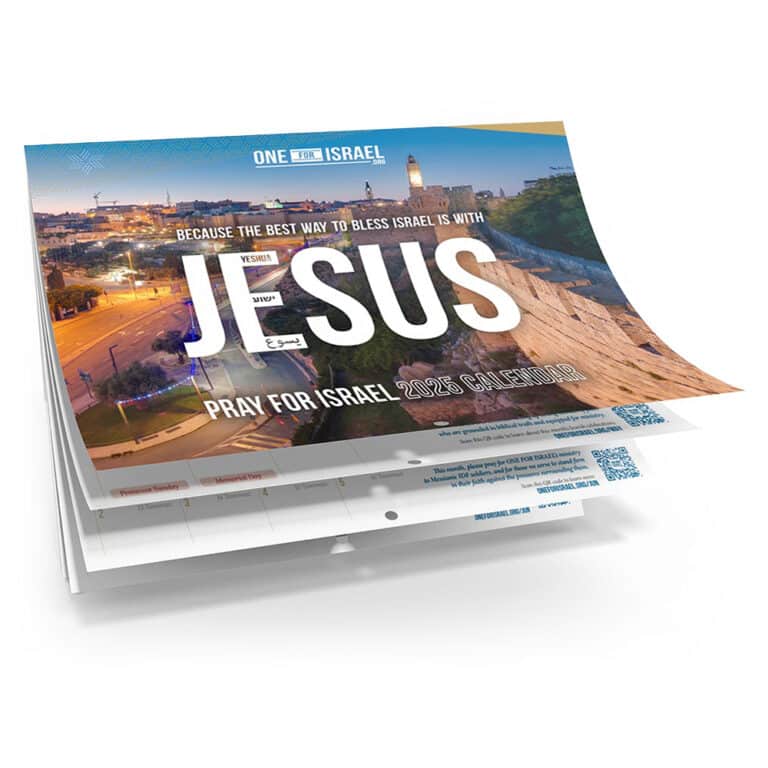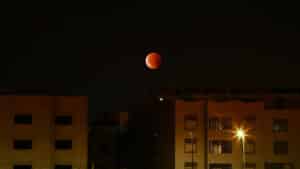There are many ways in which the Biblical ordinance of Yom Kippur, the Day of Atonement, foreshadows the greatest atonement of all: the sacrifice of the Messiah himself. God’s lists of seemingly strange and even barbaric commands about blood sacrifice in the Law can be bewildering to us in the twenty-first century. But when we look carefully at the detailed instructions and what is behind them, it can be overwhelming to see the beauty and depth of God’s wisdom and prophetic plans.
God’s Initiative
First of all, it is important to note that this special day, in which God would unilaterally wipe the slate clean for the whole people of Israel, was God’s idea. It was his initiative. It was not humans coming to him, saying, “I feel bad for all the sin we’re doing, and I’m concerned that there are also things I’m not aware of that might be separating us, so please can we arrange some sort of amnesty day each year and get a fresh start?” No.
This was God’s idea. It was God who was more upset about the distance between us than human beings have ever been. He loves us more than we love him. Always has, always will. Yom Kippur is God’s own device to restore the relationship between his holy self and his sinful people.
In the same way, it was God who took the initiative to send his Son to die for us while we were still sinners. God instituted a day when he could be reconciled with his people: the day of Yom Kippur, which ultimately points to the day of the cross.
Leaving behind clothes of splendour
Ordinarily, the high priest’s outfit was something of dazzling splendour. There were bright colours and a breastplate of precious stones. But on Yom Kippur, the high priest was required to take off these glorious robes in exchange for simple, white linen garments, in order to go into the holy of holies. Ramban, a Jewish sage, suggested it was reminiscent of a serving angel, and that the purity of the simple, white material symbolised the holiness of the day (רמב”ן, ט”ז, ד – Ramban 17,4). Only his turban remained.
To all intents and purposes, he looked just like any other priest. This foreshadows Yeshua, our great high priest, putting aside his robes of heavenly splendour and putting on human flesh to become one of us – and yet remaining holy.
The priest was required to offer a sacrifice for own sins and the sins of his household, before he was clean in God’s sight to offer sacrifices for the people. There were two goats chosen – one to be sacrificed, and one to be released into the wilderness, never to be seen again! The priest had to lay his hands on its head, symbolically transferring the nation’s sin to the goat before it disappeared forever. What a glorious picture of God taking our sin away, as far as the east is from the west, and remembering it no more.
Unusual blood sprinkling
Additionally, only on this day of the year was the high priest allowed to enter the holy of holies, where the ark of the covenant was kept. No one else was ever allowed to go in there, and the high priest himself was only permitted on this one day of the year – Yom Kippur. Kippur means covering, or atonement. The top of the ark of the covenant, the lid, or covering, is called the kaporet in Hebrew, and the high priest was required to sprinkle the blood of the sacrifice upon this cover, under the gaze of the two kruvim (angels with wings touching that are on the top of the ark). These two kruvim remind us of the angels who were put on guard to prevent Adam and Eve re-entering the Garden of Eden. Now these angels see the blood between God’s holy law which was kept inside the ark, and the people are made acceptable to God despite their sin. Though the law is there, they see the blood, and the sin is covered, atoned for.
The priest must enter with the incense before him as he approached the ark, representing the prayers of God’s holy ones, but what is remarkable is the way in which the rabbis insist that the blood must be sprinkled upon it.
Unlike any other sacrifice which requires the sprinkling of blood, on this most holy day of the year, on the one chance to enter the holy of holies before God, the rabbis agree that the priest’s motion should be “ke-mazlif” (כמצליף), or as if they were whipping someone.
Here is how it is written in the Mishna (Yoma 5,3):
“He would take the blood from him who was stirring it, and enter [again] into the place where he had entered, and stand [again] on the place on which he had stood, and sprinkle thereof once upwards and seven times downwards, aiming to sprinkle neither upwards nor downwards but kemazlif [making the movement of swinging a whip] and thus would he count: one, one and one, one and two, one and three, one and four, one and five, one and six, one and seven. Then he would go out and put it on the golden stand in the Sanctuary.”The rabbis repeat this in the Babylonian Talmud, (Tractate Yoma, 15a):
“Have we not learnt: He sprinkled thereof once upwards, and seven times downwards? That was done ke-mazlif’ [like the movement of swinging a whip]. What does ‘ke-mazlif’ mean? Rab Judah showed it by [imitating the movements of] a lasher.”Rashi, the famous rabbinic commentator from the Middle Ages, admits he doesn’t understand what it really means, while Rabbi Ovadia Bartenura suggests that it should be a motion as if whipping someone from across their shoulders downwards [1], and some have even suggested that originally it was the word “ke-matzliv” – like a cross – but that the obvious implications of this were too much for the Jewish sages and it was changed to “ke-matzlif” instead. Whether it was originally as a cross or not, this is a truly peculiar phenomenon: to meet God only once a year in this intimate way, and then fling the blood as if repeatedly whipping him? But even this rabbinic mandate serves to reinforce the picture of God himself paying the price for our sins, being whipped and suffering at the hands of humanity.
Reset: back to how it should be
Throughout the year, the tabernacle absorbed all the sins of the people in sacrifice after sacrifice, day after day, but Yom Kippur is like a pushing the “reset” button – disinfecting the place from all the sin of the people over the year, and going back to zero. It is called a “Shabbat shabbaton”; a day of solemn rest. A sabbath of sabbaths – a bit like the Year of Jubilee (seven sabbath years), when everything goes back to its original owner, back to how it should be. This is God’s ultimate goal in sending our redeemer, Yeshua: to restore us to right relationship with him, as it was in the perfect Garden of Eden before the Fall.
God’s instructions in the Torah, in Leviticus 16 and 23, clearly point to the coming Messiah, Yeshua, and how he would redeem us all by his blood one day. As God declares through the prophet Zechariah, “I will remove the iniquity of this land in a single day” (Zech 3:9). God did exactly that, just as he said he would. And I am so very grateful that he did.
[1] http://www.hebrewbooks.org/pagefeed/hebrewbooks_org_37942_42.pdf
Photo by Sonder Quest on Unsplash
















